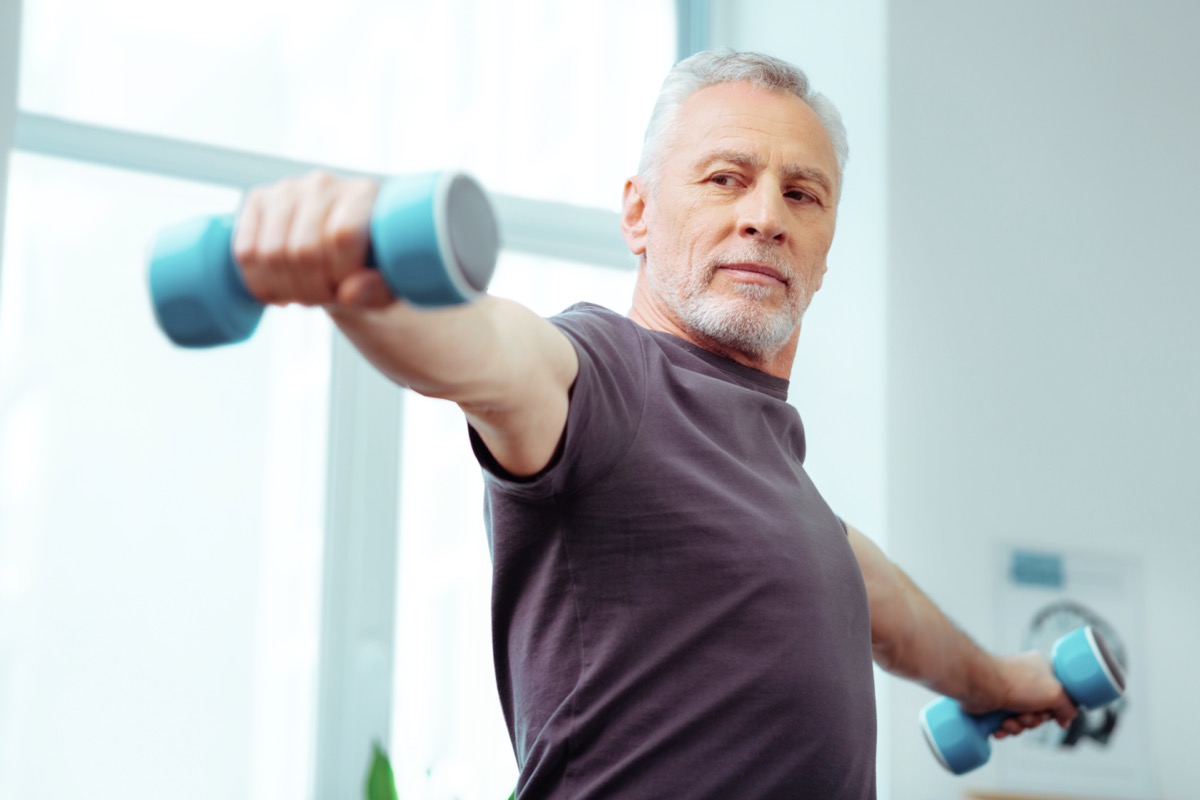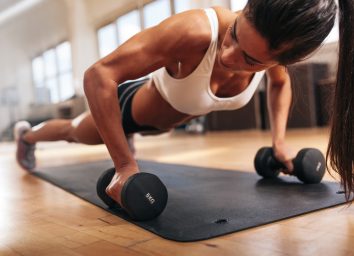The #1 Best Workout for Fighting Inflammation, New Study Says

It’s well-documented that working out can improve one’s mood, increase positivity, and reduce anxiety. This euphoric effect, often called a “runner’s high,” is usually chalked up to hormones released by the body called endorphins. Interestingly, however, scientists have speculated for quite some time that endocannabinoids, naturally-produced bodily “cannabis-like substances,” are in actuality responsible for post-workout feelings of contentment.
Now, groundbreaking new research conducted at the University of Nottingham and published in Gut Microbes is adding even more context to the relationship between exercise—in this case, strength training and weight lifting specifically—and endocannabinoids. The study illustrates how resistance exercises jumpstart a complex and interconnected series of reactions within the human body that ultimately result in both pain relief and reduced chronic inflammation.
Even better, all it takes is a little bit of dedication and 15 minutes per day to reap these pain-relieving rewards. Read on to learn more, and next, don’t miss The #1 Best Way to Fight Anxiety, New Study Says.
More endocannabinoids, less pain

The research involved a group of adults suffering from painful osteoarthritis. A portion of participants were instructed to spend 15 minutes daily lifting weights six days a week for a total of six weeks. Sure enough, subjects assigned to the strength training condition enjoyed serious pain relief by the end of the experimental period.
That’s not all, either: Weightlifting participants saw their bodily levels of inflammatory substances called cytokines decrease while endocannabinoid levels simultaneously increased.
While this certainly isn’t the first scientific project to tell us that exercise helps with chronic inflammation, which of course can lead to a litany of serious conditions such as cancer or heart disease, this new study appears to have finally answered how exercise decreases inflammation.
“Our study clearly shows that exercise increases the body’s own cannabis-type substances. Which can have a positive impact on many conditions,” says first study author Doctor Amrita Vijay, a Research Fellow in the School of Medicine.
Related: Sign up for our newsletter for the latest Mind + Body news!
The endocannabinoid system

The human body’s endocannabinoid system (ECS) is still in many ways a mystery to modern science. Only recently discovered in the 1990s, we know the ECS is a complex cell-signaling system that plays a major regulatory role. From sleep and appetite to mood and memory, the ECS helps ensure everything is running smoothly.
On a more detailed level, the ECS is made up of endocannabinoids, or molecules produced naturally by the body, and receptors for those molecules. It doesn’t matter if you’ve never touched a joint in your life, everyone’s body is filled with ECS receptors that endocannabinoids can bind to and activate if called upon. For example, endocannabinoids may bind to receptors within the spine in order to help relieve pain. THC, the cannabinoid found in marijuana responsible for the plant’s trademark “high,” also binds to ECS receptors.
Related: Secret Tricks for Getting a Lean Body After 40, Science Says
The research

A total of 78 people living with arthritis took part in this study. Roughly half (38%) were assigned to the exercise group while the other 40 weren’t instructed to exercise at all.
By the end of the six-week study period those who had been exercising reported feeling much less pain in general and displayed higher bodily levels of the endocannabinoid anandamide. Exercising participants also showed fewer cytokines, considered indicators of chronic inflammation, as well as more gut microbes producing anti-inflammatory substances. Adults assigned to the non-exercise group did not experience any of these changes.
Related: 3 Major Secrets to Living to 99, According to Betty White.
It all starts in the stomach

Much of these exercise-related benefits may begin in the gut. Study authors report endocannabinoid increases among exercisers were strongly linked to observed gut microbiome changes. They estimate at least one-third of the gut’s observed anti-inflammatory benefits were due to increased endocannabinoids.
“As interest in cannabidiol oil and other supplements increases, it is important to know that simple lifestyle interventions like exercise can modulate endocannabinoids,” Dr. Vijay concludes.
For more, check out The Best Eating Habits to Fight Inflammation, Say Dietitians.








